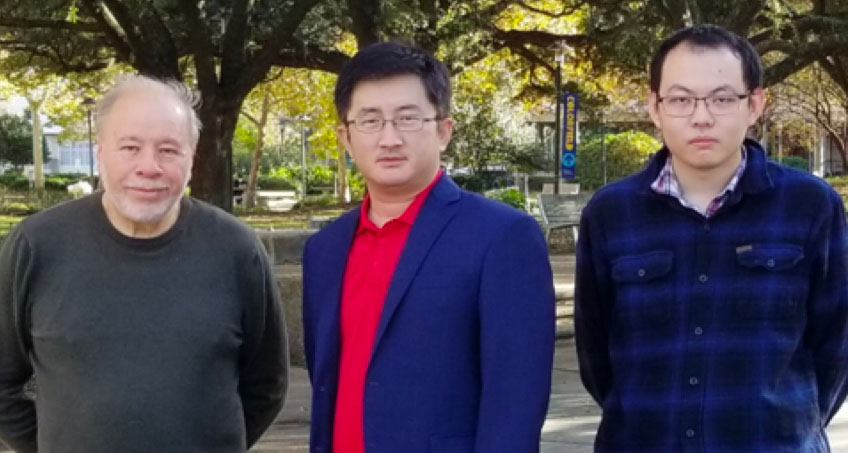Yuesu Jin, Ph.D. Student, Awarded AGU Paros Scholarship in Geophysical Instrumentation
Yuesu Jin, a fifth-year Ph.D. candidate, was one of three recipients of the 2022 AGU Paros Scholarships in Geophysical Instrumentation. The Paros Scholarships were established by Jerome M. Paros to support graduate students with a demonstrated interest in geophysical instrumentation and field measurements in seismology, atmospheric sciences, or ocean sciences. The scholarship provides a $5,000 cash award to each recipient.

Jin’s research focuses on wave-fracture interaction in the Earth’s subsurface. This phenomenon was identified using numerical modeling where a low frequency seismic wave can significantly amplify the fluid pressure in a fluid-filled fracture (the pressure surge effect).
This effect may be the underlying mechanism for triggered earthquakes, triggered volcanic/geyser eruptions, and liquefaction.
Jin made a significant contribution to the field by creating a low-frequency underwater acoustic experiment system, which includes a low-f source (10~70Hz) and a thin pressure sensor (0.2mm in thickness; frequency range: 0.1 – 600 Hz). He observed that in a 1.2 meters long water-filled fracture, the fluid pressure inside the fracture was amplified up to 25.5 times that of the incident wave pressure.

“This experimental proof of a pressure surge effect is an important milestone. In the context of triggered earthquakes, a significant pressure amplification can reduce the confining stress acting on the fault surfaces, cause them to slip, and result in a triggered earthquake,” said Jin’s advisor Dr. Yingcai Zheng .
With the support of the Paros Scholarship, Jin will take his work a step further.
“The final goal is to test the pressure surge in places like geothermal fields. However, the subsurface conditions are much harsher than the ambient conditions,” Jin said.
Jin and Zheng want to make a new pressure sensor that can work in high-temperature environments using piezoelectric materials such as lithium niobate. To test the new sensor, they plan to build a vibration system with a furnace to test the transducer in high-temperature environments.
New sensors developed here will play an important role in the energy transition.
The pressure surge effect can be used to detect fractures in the cap rocks at geological carbon storage sites and geothermal fields where fractures provide the primary permeable pathways for fluids. Waste water injection and hydraulic fracking have both induced earthquakes. The injection of a large volume of high-pressure supercritical CO2 into rock formations may cause cap-rock integrity damage due to the pressure surge effect. These hazards require new geophysical instrumentation to monitor, prevent, or mitigate risks associated with the energy transition.
“I am happy to see we are making progresses in both software and hardware for fundamental science,” said Dr. Zheng.
